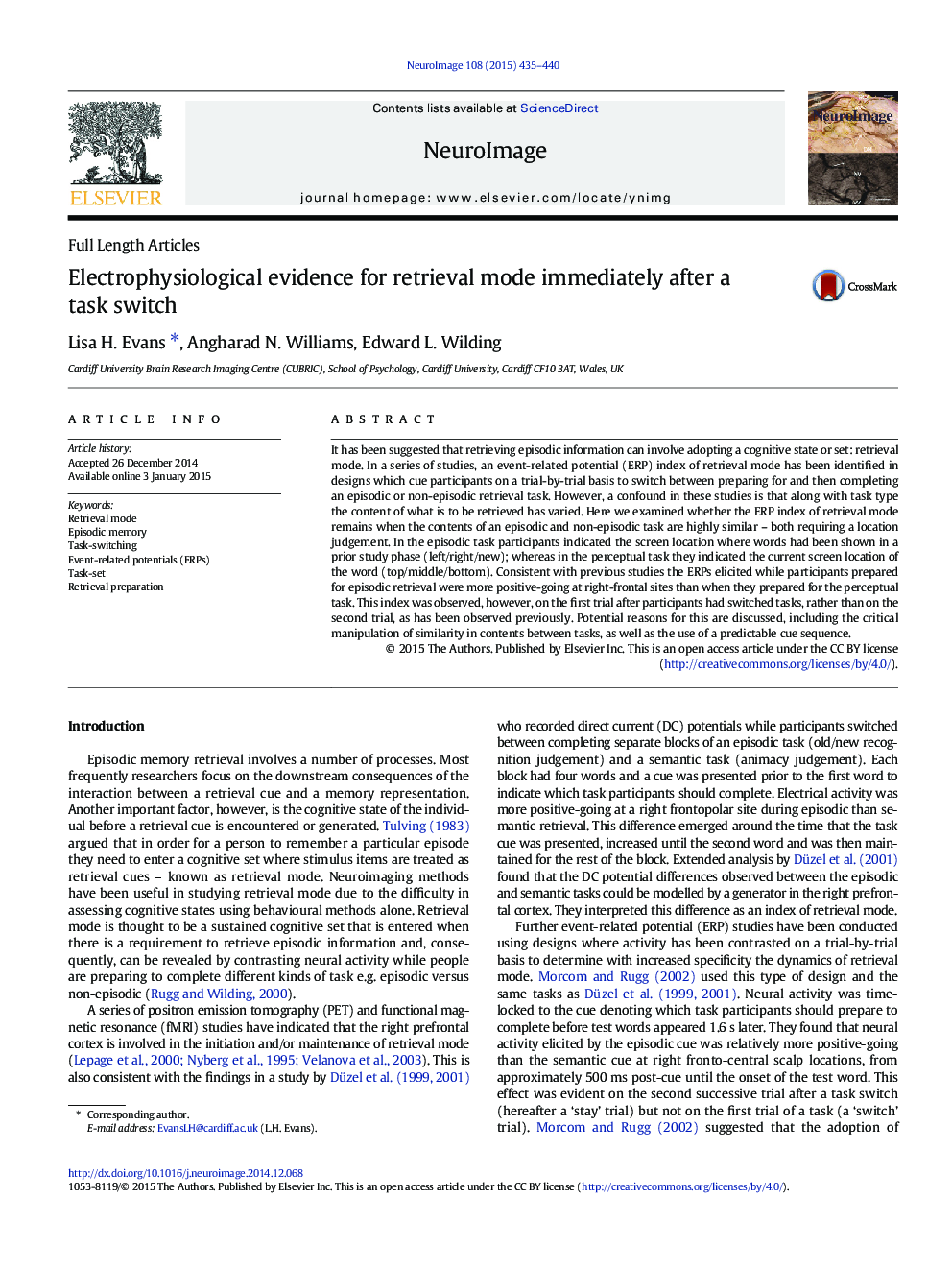| کد مقاله | کد نشریه | سال انتشار | مقاله انگلیسی | نسخه تمام متن |
|---|---|---|---|---|
| 6025938 | 1580899 | 2015 | 6 صفحه PDF | دانلود رایگان |
- People were cued to switch between episodic and non-episodic cognitive tasks.
- Both tasks required judgements about stimulus location.
- ERPs were acquired in response to the cues signalling which task to complete.
- Preparatory ERPs for episodic retrieval had different timings than in prior studies.
- These outcomes offer new insights into processes that facilitate episodic retrieval.
It has been suggested that retrieving episodic information can involve adopting a cognitive state or set: retrieval mode. In a series of studies, an event-related potential (ERP) index of retrieval mode has been identified in designs which cue participants on a trial-by-trial basis to switch between preparing for and then completing an episodic or non-episodic retrieval task. However, a confound in these studies is that along with task type the content of what is to be retrieved has varied. Here we examined whether the ERP index of retrieval mode remains when the contents of an episodic and non-episodic task are highly similar - both requiring a location judgement. In the episodic task participants indicated the screen location where words had been shown in a prior study phase (left/right/new); whereas in the perceptual task they indicated the current screen location of the word (top/middle/bottom). Consistent with previous studies the ERPs elicited while participants prepared for episodic retrieval were more positive-going at right-frontal sites than when they prepared for the perceptual task. This index was observed, however, on the first trial after participants had switched tasks, rather than on the second trial, as has been observed previously. Potential reasons for this are discussed, including the critical manipulation of similarity in contents between tasks, as well as the use of a predictable cue sequence.
Journal: NeuroImage - Volume 108, March 2015, Pages 435-440
